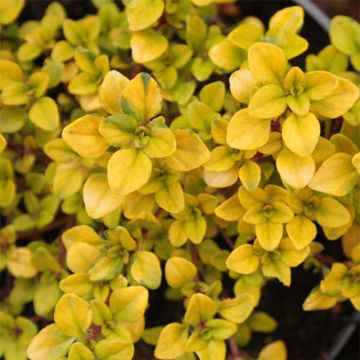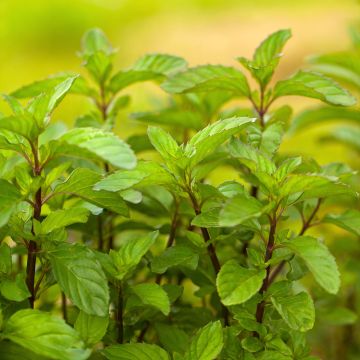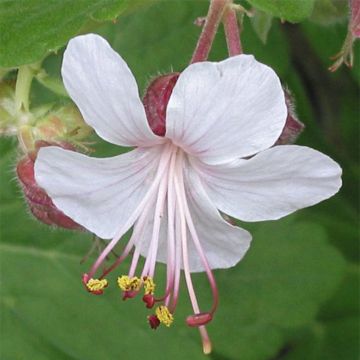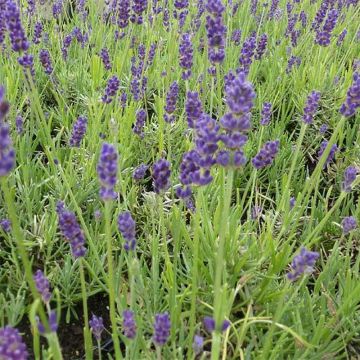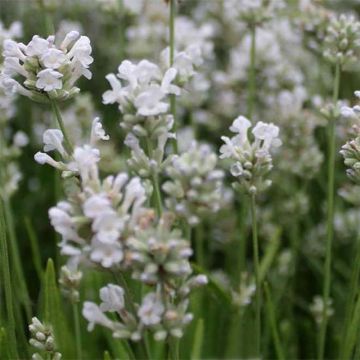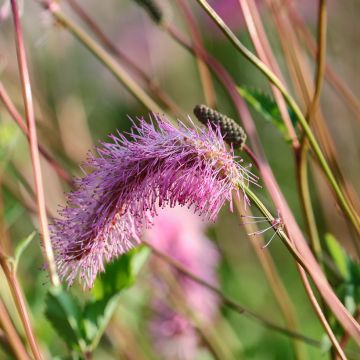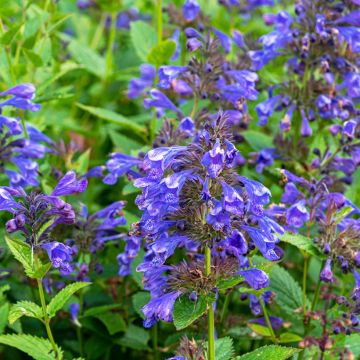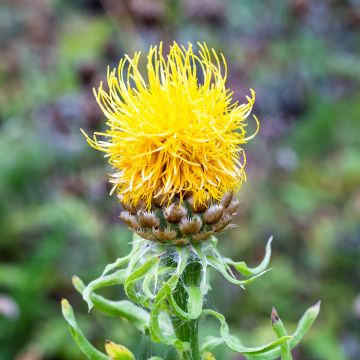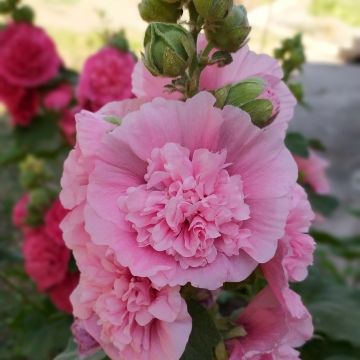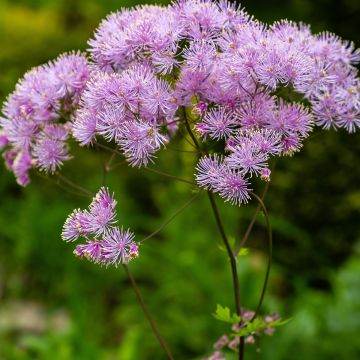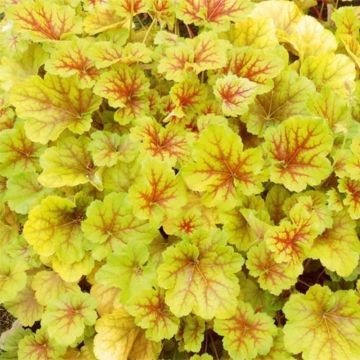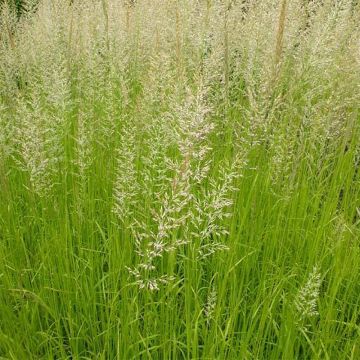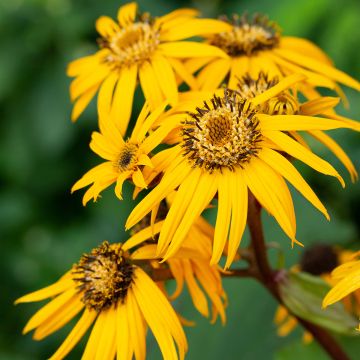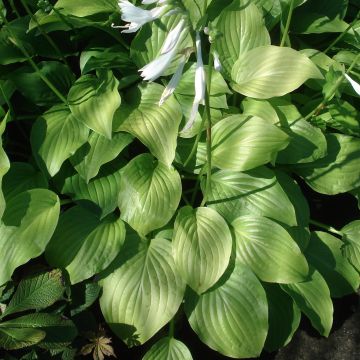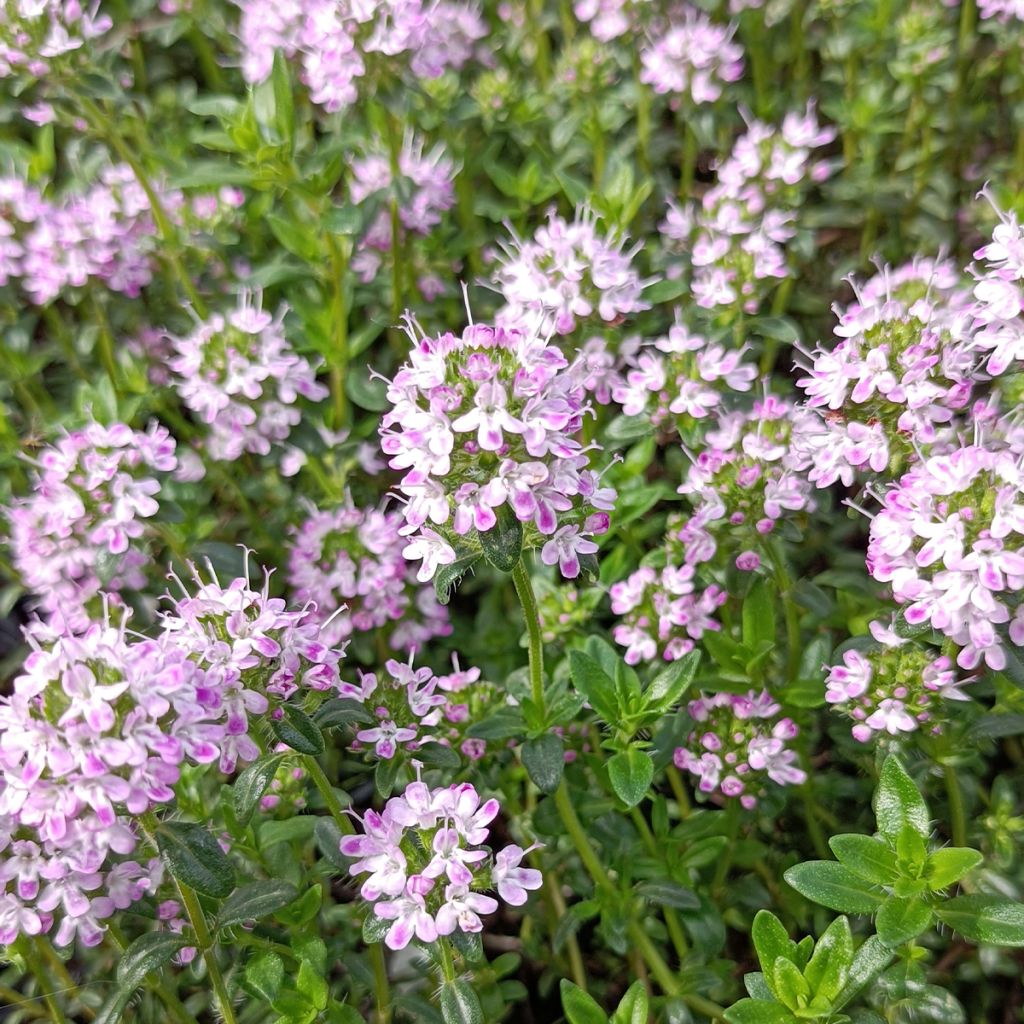

Thymus nitens - Thyme
Thymus nitens - Thyme
Thymus nitens
Thyme
Not as described
Patrick D., 20/12/2018
This item cannot be shipped to the selected country
Delivery charge from €5.90
More information
Schedule delivery date,
and select date in basket
This plant carries a 12 months recovery warranty
More information
We guarantee the quality of our plants for a full growing cycle, and will replace at our expense any plant that fails to recover under normal climatic and planting conditions.
From €5.90 for pickup delivery and €6.90 for home delivery
Express home delivery from €8.90.

Does this plant fit my garden?
Set up your Plantfit profile →
Description
Thymus nitens is commonly called Shiny Thyme due to the shine of its small evergreen foliage. Quite different from others, this species with a habit that is both upright and trailing prefers slightly acidic soils, tolerates soil moisture and less intense sunlight. Excellent aromatic and medicinal plant appreciated in cooking for its powerful lemon aroma, this hardy and robust thyme with a dense cushion-like appearance works wonders in ornamental gardens where it can form attractive groundcovers, with its long flexible stems covered in numerous pink flowers in spring.
Native to Southern Europe, Thymus nitens is a botanical species belonging to the Lamiaceae family. This shrub, woody at the base and on aged stems, has a habit that is both upright and prostrate, carried by trailing branches. At maturity, the plant will reach about 25 cm (10in) in height when in flower (sometimes less depending on growing conditions), spreading over more than 50 cm (20in). Its foliage consists of tiny, elongated-oval, fairly flat leaves, with a deep green colour and particularly shiny on both sides. When crushed, they release an interesting lemon scent. Flowering occurs in June-July depending on the climate. Very small tubular and bilabiate flowers in a tender pink-mauve colour, grouped in elongated spikes, bloom above the foliage, at the tips of the current year's shoots, attracting numerous pollinating insects. This plant releases compounds from its roots that inhibit the germination of other plants through allelopathy, which ultimately reduces the need for weeding.
Thymus nitens is decorative all year round, and proves to be hardy in well-drained soil in all regions. Its prostrate habit makes it an ideal plant to elegantly adorn a rock garden, the top of walls, or the edges of a stone staircase. It is also used as groundcover in front of shrub borders or along pathways, alone or mixed with other alpine shrubs such as rockroses, as well as with robust plants like Bergenia, perennial geraniums, valerians, alyssums, sedums, and aubrietas. It can of course be welcomed in the vegetable garden, among sages, hyssops, wild thyme, tarragon, savory, rosemary, and other aromatic plants.
Report an error about the product description
Thymus nitens - Thyme in pictures
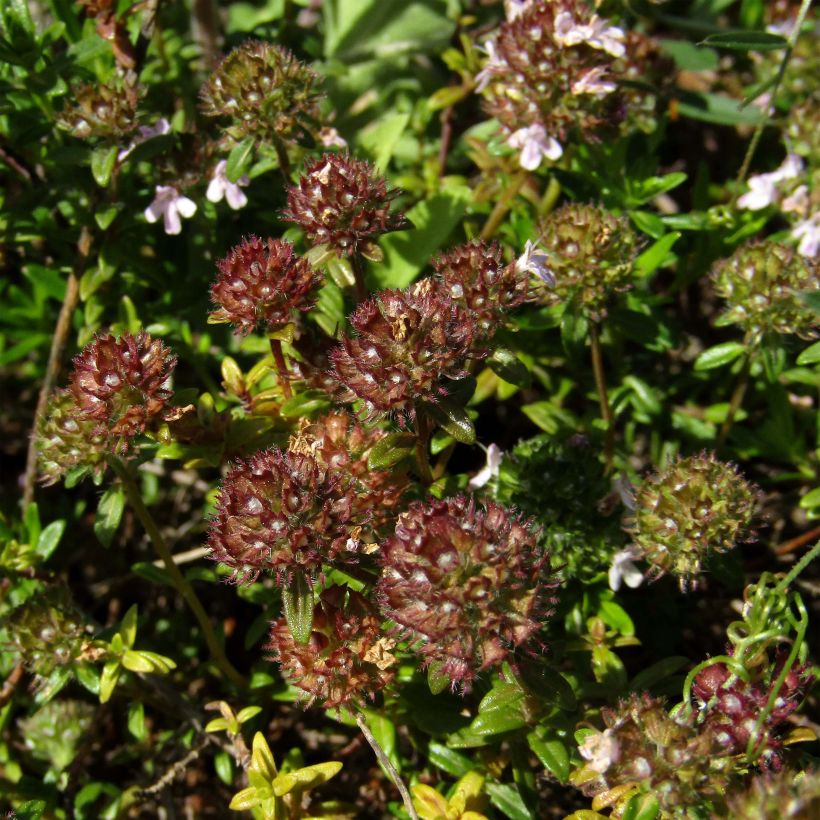

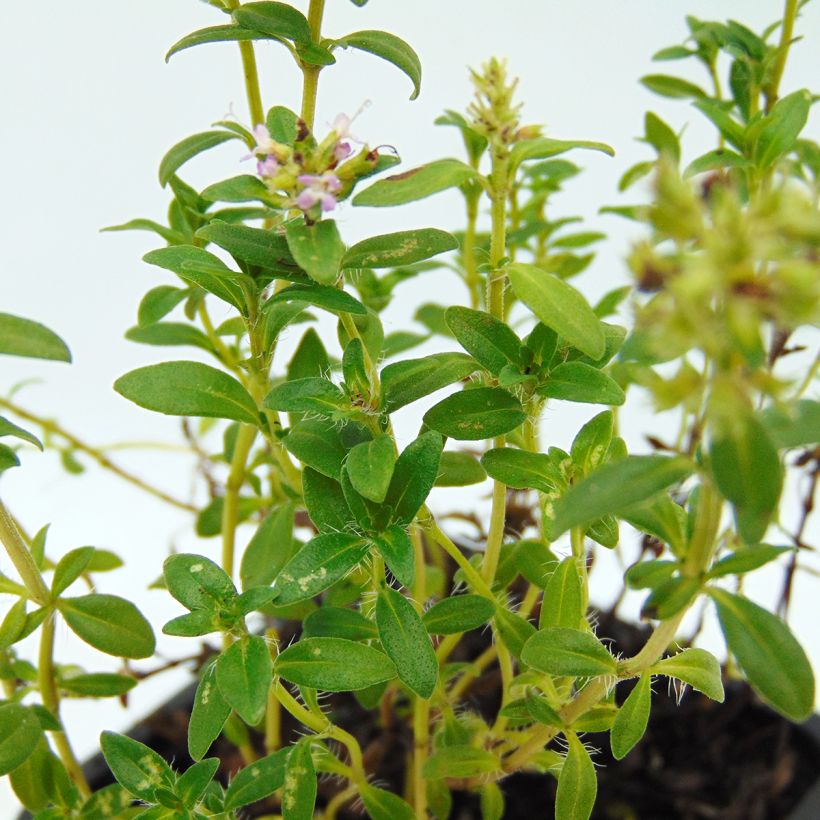

Flowering
Foliage
Plant habit
Botanical data
Thymus
nitens
Lamiaceae
Thyme
Western Europe
Other Herb perennials
Planting and care
Thymus nitens is a plant well adapted to alpine climates, but also better adapted than the common thyme to our cooler and wetter regions in summer. It requires a well-drained soil, preferably sandy or rocky, poor, which is neutral to acidic. It is water-efficient, but it dislikes climates and situations that are too arid in summer.
Plant it after the last frosts and in September-October in warmer and drier climates. It thrives in full sun or partial shade. When planted in overly rich soil, it becomes sad and lacks fragrance. In poor and well-drained soil, it is hardy down to a minimum of -15°C and will live longer. Plant it in a raised bed with non-limestone gravel, in a rockery, on a sandy slope, any substrate that does not retain excessive moisture that would be harmful in winter. It is preferable to prune the stems after flowering to maintain a compact habit for the plant.
Regularly pruning them (on young wood), and after flowering, allows them to age better and remain compact.
Planting period
Intended location
Care
-
, onOrder confirmed
Reply from on Promesse de fleurs
Summer flowering perennials
Haven't found what you were looking for?
Hardiness is the lowest winter temperature a plant can endure without suffering serious damage or even dying. However, hardiness is affected by location (a sheltered area, such as a patio), protection (winter cover) and soil type (hardiness is improved by well-drained soil).

Photo Sharing Terms & Conditions
In order to encourage gardeners to interact and share their experiences, Promesse de fleurs offers various media enabling content to be uploaded onto its Site - in particular via the ‘Photo sharing’ module.
The User agrees to refrain from:
- Posting any content that is illegal, prejudicial, insulting, racist, inciteful to hatred, revisionist, contrary to public decency, that infringes on privacy or on the privacy rights of third parties, in particular the publicity rights of persons and goods, intellectual property rights, or the right to privacy.
- Submitting content on behalf of a third party;
- Impersonate the identity of a third party and/or publish any personal information about a third party;
In general, the User undertakes to refrain from any unethical behaviour.
All Content (in particular text, comments, files, images, photos, videos, creative works, etc.), which may be subject to property or intellectual property rights, image or other private rights, shall remain the property of the User, subject to the limited rights granted by the terms of the licence granted by Promesse de fleurs as stated below. Users are at liberty to publish or not to publish such Content on the Site, notably via the ‘Photo Sharing’ facility, and accept that this Content shall be made public and freely accessible, notably on the Internet.
Users further acknowledge, undertake to have ,and guarantee that they hold all necessary rights and permissions to publish such material on the Site, in particular with regard to the legislation in force pertaining to any privacy, property, intellectual property, image, or contractual rights, or rights of any other nature. By publishing such Content on the Site, Users acknowledge accepting full liability as publishers of the Content within the meaning of the law, and grant Promesse de fleurs, free of charge, an inclusive, worldwide licence for the said Content for the entire duration of its publication, including all reproduction, representation, up/downloading, displaying, performing, transmission, and storage rights.
Users also grant permission for their name to be linked to the Content and accept that this link may not always be made available.
By engaging in posting material, Users consent to their Content becoming automatically accessible on the Internet, in particular on other sites and/or blogs and/or web pages of the Promesse de fleurs site, including in particular social pages and the Promesse de fleurs catalogue.
Users may secure the removal of entrusted content free of charge by issuing a simple request via our contact form.
The flowering period indicated on our website applies to countries and regions located in USDA zone 8 (France, the United Kingdom, Ireland, the Netherlands, etc.)
It will vary according to where you live:
- In zones 9 to 10 (Italy, Spain, Greece, etc.), flowering will occur about 2 to 4 weeks earlier.
- In zones 6 to 7 (Germany, Poland, Slovenia, and lower mountainous regions), flowering will be delayed by 2 to 3 weeks.
- In zone 5 (Central Europe, Scandinavia), blooming will be delayed by 3 to 5 weeks.
In temperate climates, pruning of spring-flowering shrubs (forsythia, spireas, etc.) should be done just after flowering.
Pruning of summer-flowering shrubs (Indian Lilac, Perovskia, etc.) can be done in winter or spring.
In cold regions as well as with frost-sensitive plants, avoid pruning too early when severe frosts may still occur.
The planting period indicated on our website applies to countries and regions located in USDA zone 8 (France, United Kingdom, Ireland, Netherlands).
It will vary according to where you live:
- In Mediterranean zones (Marseille, Madrid, Milan, etc.), autumn and winter are the best planting periods.
- In continental zones (Strasbourg, Munich, Vienna, etc.), delay planting by 2 to 3 weeks in spring and bring it forward by 2 to 4 weeks in autumn.
- In mountainous regions (the Alps, Pyrenees, Carpathians, etc.), it is best to plant in late spring (May-June) or late summer (August-September).
The harvesting period indicated on our website applies to countries and regions in USDA zone 8 (France, England, Ireland, the Netherlands).
In colder areas (Scandinavia, Poland, Austria...) fruit and vegetable harvests are likely to be delayed by 3-4 weeks.
In warmer areas (Italy, Spain, Greece, etc.), harvesting will probably take place earlier, depending on weather conditions.
The sowing periods indicated on our website apply to countries and regions within USDA Zone 8 (France, UK, Ireland, Netherlands).
In colder areas (Scandinavia, Poland, Austria...), delay any outdoor sowing by 3-4 weeks, or sow under glass.
In warmer climes (Italy, Spain, Greece, etc.), bring outdoor sowing forward by a few weeks.


































